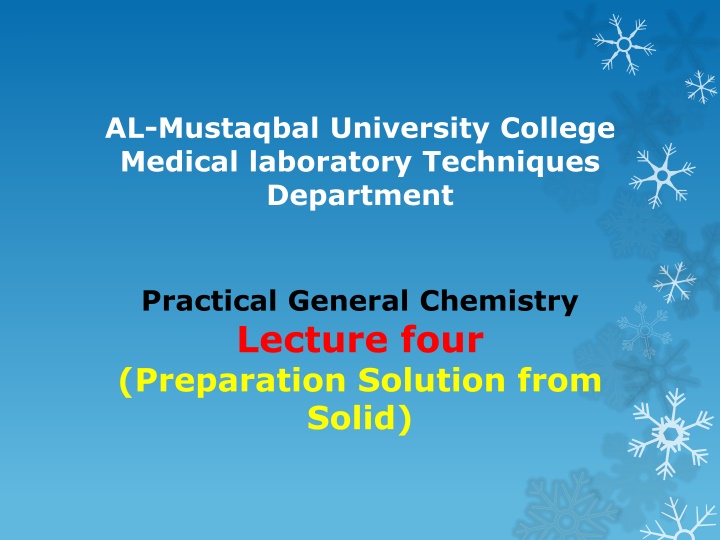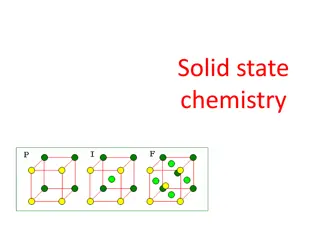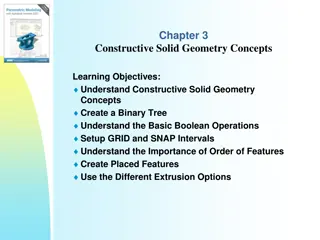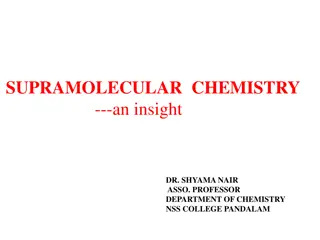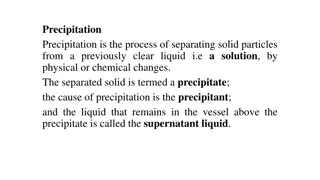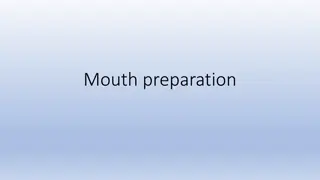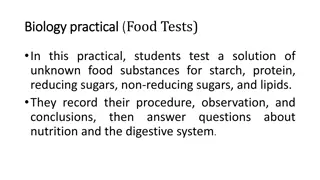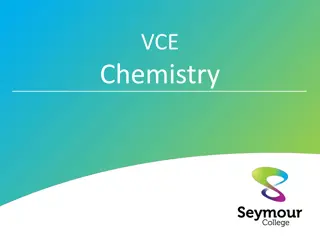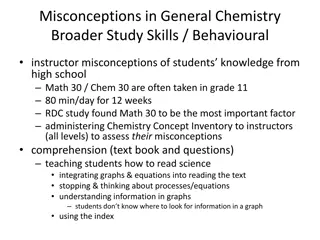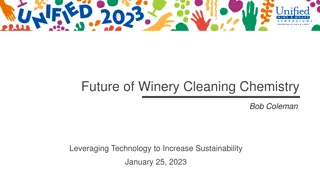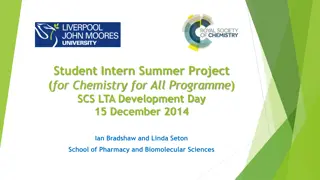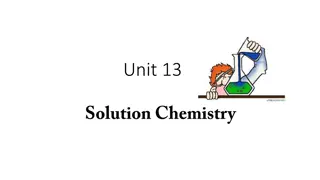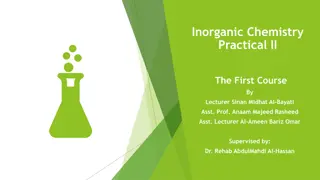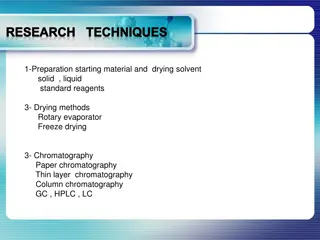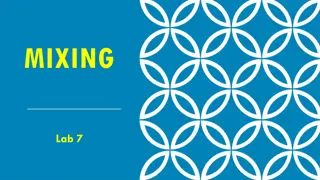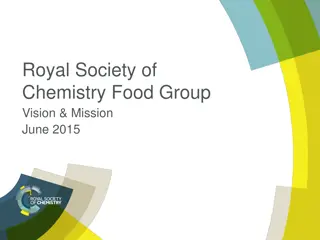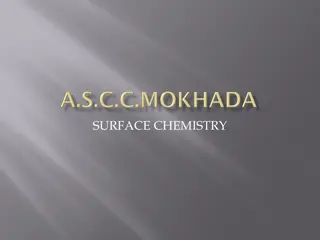Preparation of Solution from Solid: Practical General Chemistry Techniques
Solutions are homogeneous mixtures where a solute is dissolved in a solvent. Known concentration solutions can be prepared using solid substances through careful techniques. This process involves weighing the solid, dissolving it in a beaker, transferring to a volumetric flask, and finalizing the solution volume. The concentration of the solution can be calculated based on the mass, molar weight, and desired molarity of the solute. Key equipment includes a watch glass, stirrer, beaker, spatula, funnel, volumetric flask, washing bottle, and balance.
Download Presentation

Please find below an Image/Link to download the presentation.
The content on the website is provided AS IS for your information and personal use only. It may not be sold, licensed, or shared on other websites without obtaining consent from the author.If you encounter any issues during the download, it is possible that the publisher has removed the file from their server.
You are allowed to download the files provided on this website for personal or commercial use, subject to the condition that they are used lawfully. All files are the property of their respective owners.
The content on the website is provided AS IS for your information and personal use only. It may not be sold, licensed, or shared on other websites without obtaining consent from the author.
E N D
Presentation Transcript
AL-Mustaqbal University College Medical laboratory Techniques Department Practical General Chemistry Lecture four (Preparation Solution from Solid)
A solution is a homogeneous mixture created by dissolving one or more solutes in a solvent. The chemical present in a smaller amount, the solute, is soluble in the solvent (the chemical present in a larger amount). Solutions with referred to as standard (stock) accurately known concentrations can be solutions. These solutions are bought directly from the manufacturer or formed by dissolving the desired amount of solute into a volumetric flask of a specific volume. Stock solutions are frequently diluted to solutions of lesser concentration for experimental use in the laboratory.
A solution of known concentration can be prepared from solids by two similar methods. Although inherent errors exist with each of the methods, with careful technique either will suffice for making solutions in General Chemistry Laboratory.
Watch glass Stirrer Beaker Spatula funnel volumetric Flask Washing bottle Balance.
Procedure: 1.Weight the solid substance in a watch glass. 2.Transfer to a beaker and add a small amount of solvent to the beaker and stirred the solution until the solid substance is dissolved. 3.Transfer the solution to the volumetric flask. 4.Put a funnel into the slim neck of the volumetric flask.
5.Complete the additional of solvent to required volume (add solvent until the liquid level reaches the calibration mark). 6.Capped the volumetric flask and inverted until the contents are thoroughly mixed and completely dissolved.
Molarity(M) = mass(g) *1000/ M.wt * V(ml) Molar mass for Na=23 , C=12 , O=16 M.wt of (Na2CO3) =(2*23)+12+(3*16) =106 Mass(g)= Molarity(M) *M.wt*V(ml) /1000 1000 / 0.1 *106 *100 =
